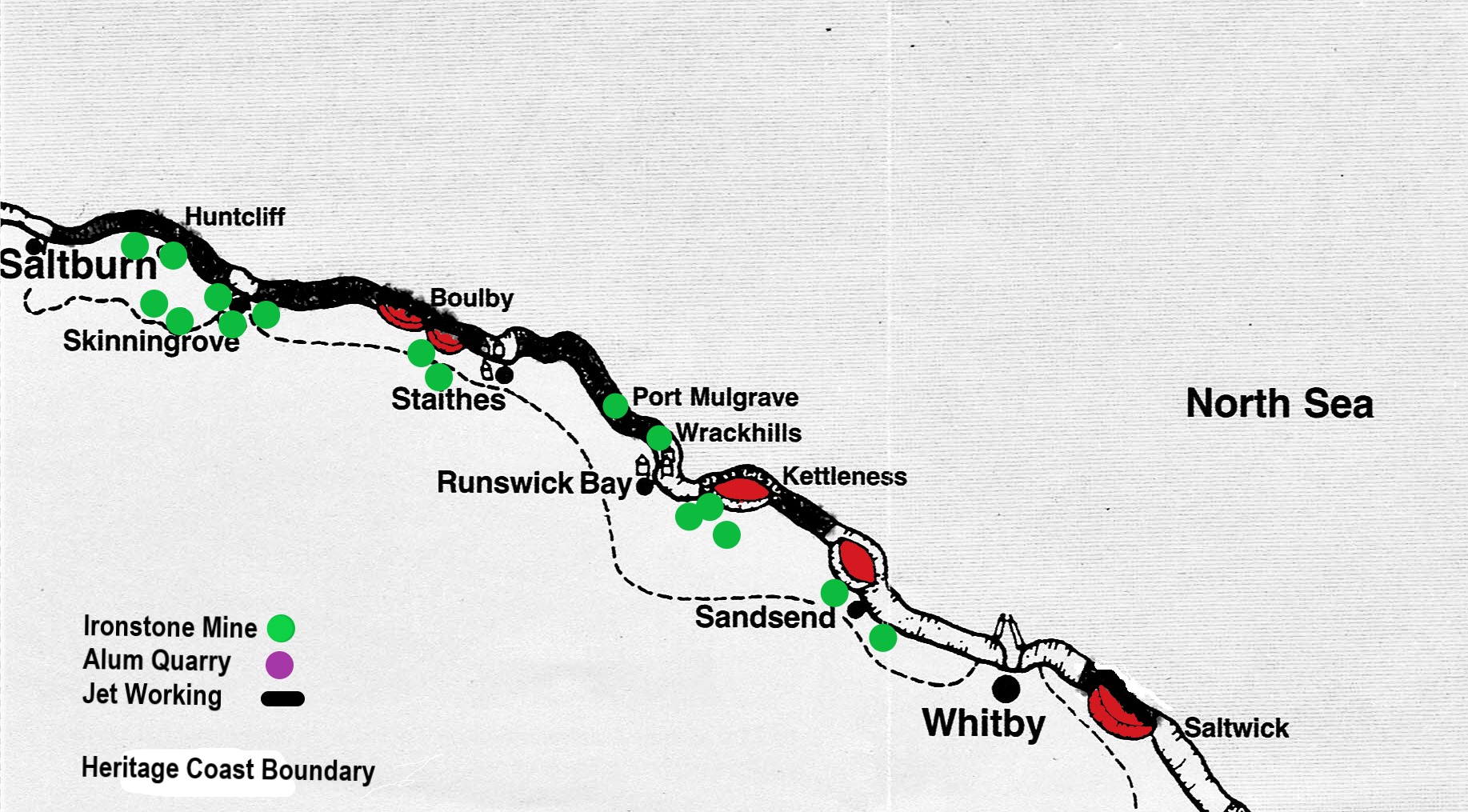Log in to
https://mulgravecrp.wordpress.com/
and follow link to Google Map showing almost 2000 items of historical interest researched from 19th and 20th century maps
HINDERWELL is the most northerly parish in the Scarborough Borough Council area. Hinderwell is mentioned in the Doomsday Book as Hildrewell, and is said to have got it’s name from St. Hilda, the Abbess of Whitby Abbey. Legend has it, that she was asked to intercede in a drought whilst passing through the village, and the water that sprang from the hillside still runs to this day.

The Holy Well in St. Hilda’s Churchyard became a pilgrimage during the Middle Ages, as the water was said to have healing powers for eye conditions
During the nineteenth and early twentieth centuries the mining and fishing industries, and also agriculture were the main sources of employment, in the area. There was a Cornmill in Hinderwell, and another one a mile away in Dalehouse. The parish population was over 2000. Staithes was once the principle fishing port on the north east coast

Map showing Ironstone, Alum and Jet Working sites.
In 1883, a new railway line was opened – the Whitby, Redcar and Middlesbrough Union Railway.
All stations (at Sandsend, Kettleness, Hinderwell & Staithes) along the line were of the same design. Hinderwell & Staithes had a warehouse and a two ton crane.
Hinderwell Station
In the early 20thC there were three trains a day conveying ironstone to Teesside, and also a daily fish train. In the peak summer period of 1939, there were as many as 18 passenger trains in each direction over the Whitby-Loftus single line, some being non-stop, bringing many tourists to the area.
A new route from Whitby to Middlesbrough had been provided via Battersby. New bus routes had been opened, which were more regular and much cheaper. Motor cars altered the patterns of holidays for many people, and the line became uneconomical and extremely expensive to maintain. The last day that trains operated on the WRMU was 3rd May 1958.
Unfortunately, by the summer of 1957, this had reduced to 9 trains Mon – Fri, 13 on Saturdays and 6 on Sundays. The line was difficult to maintain and operate, with steep gradients and severe speed restrictions.
The site of Hinderwell station (above) is now a small industrial estate and play area.


